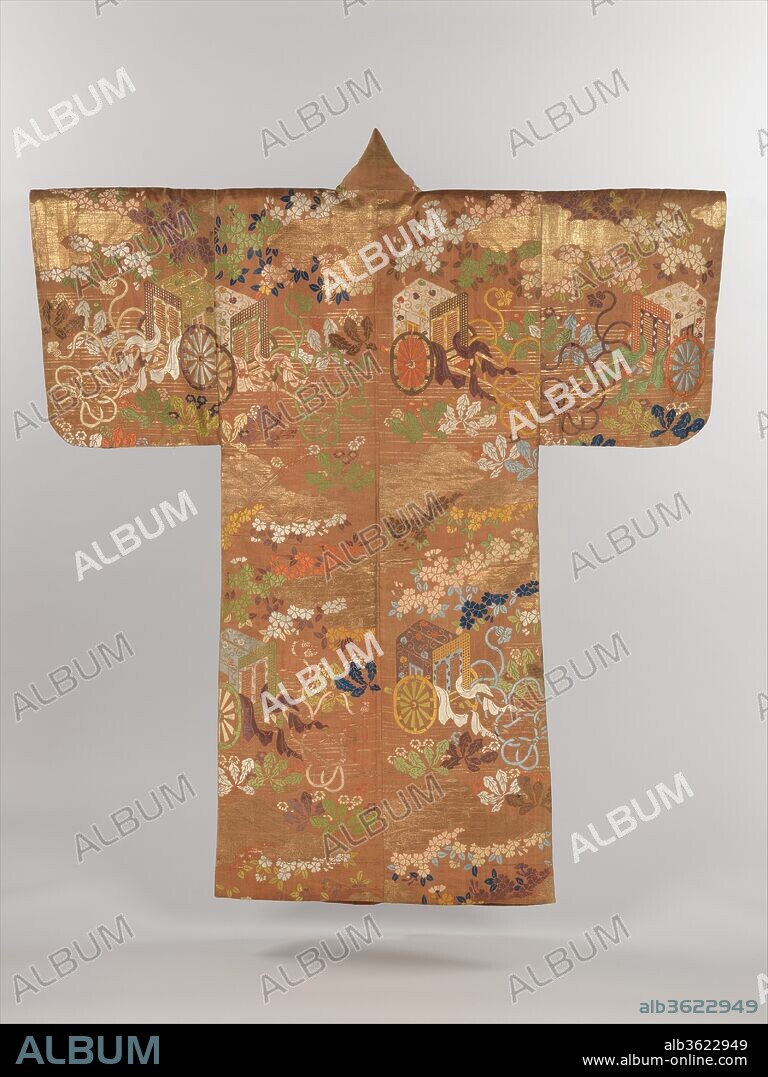alb3622949
Noh Costume (Karaori) with Court Carriages and Cherry Blossoms

|
Ajouter à une autre Lightbox |
|
Ajouter à une autre Lightbox |



Avez-vous déjà un compte? S'identifier
Vous n'avez pas de compte ? S'inscrire
Acheter cette image
Titre:
Noh Costume (Karaori) with Court Carriages and Cherry Blossoms
Légende:
Voir la traduction automatique
Noh Costume (Karaori) with Court Carriages and Cherry Blossoms. Culture: Japan. Dimensions: Overall: 68 x 57 1/2 in. (172.7 x 146.1 cm). Date: first half of the 19th century.
This Noh costume has unusually large pictorial motifs of courtly carriages, dandelions, and cherry blossoms. During the Heian period (794-1185), carriages were the vehicles of the aristocracy and figured in many works of literature, such as The Tale of Genji. In an episode in chapter nine, called the "Battle of the Carriages," they are used to jockey for an advantageous position from which to view Genji's performance at the annual festival dedicated to the Kamo Shrine. The carriages on this karaori are decorated following the festival tradition of adorning headdresses and carriages with heart-shaped leaves from the wild ginger plant (aoi), which is sacred to the Kamo Shrine.
Technique/matériel:
Twill-weave silk brocade with supplementary-weft patterning in metallic thread
Période:
Edo period (1615-1868)
Musée:
Metropolitan Museum of Art, New York, USA
Crédit:
Album / Metropolitan Museum of Art, NY
Autorisations:
Modèle: Non - Propriété: Non
Questions sur les droits?
Questions sur les droits?
Taille de l'image:
3203 x 4268 px | 39.1 MB
Taille d'impression:
27.1 x 36.1 cm | 10.7 x 14.2 in (300 dpi)
Mots clés:
 Pinterest
Pinterest Twitter
Twitter Facebook
Facebook Copier le lien
Copier le lien Email
Email
